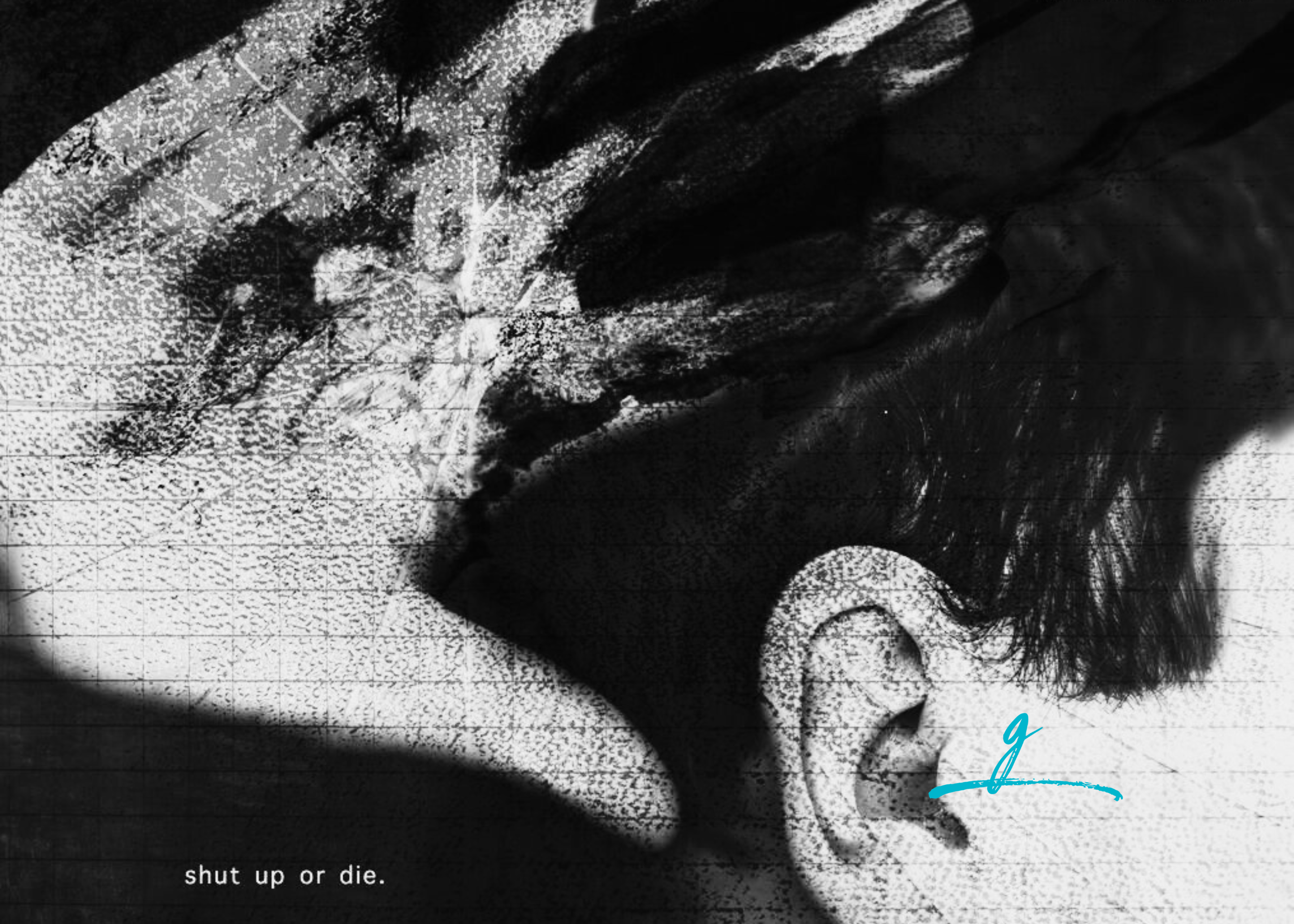Less in More: The Art of Simplicity in World-Ending Horror
“It’s the end of the world as we know it, and I feel fine.” - R.E.M. or Great Big Sea, whichever you fancy
As a horror fan, I have a bit of a quirk in that I not only enjoy low budget films, there are certain storylines where I prefer them to their big budget alternatives.
The end of the world, is one of those storylines.
Pontypool Poster
When it comes time to end the world onscreen, the action genre tends to swoop in with bigger budgets that rely heavily on digital special effects and scenes of large, panicked crowds. We watch because there is a thrill watching the disaster from our seat in the theater, while cramming popcorn in our pie hole.
In the horror genre, it plays out differently.
Rarely do horror films receive the budget approvals as traditional action movies do. A fact I am grateful for. World-ending horror is often interwoven with science fiction (Lifeforce, Life), supernatural (Evil Dead, The Stand), and survivalist tropes (Night of the Living Dead, Snowpiercer). When the budgets prohibit the filmmakers from showing us exactly what is happening on a grand scale, I’m usually quite happy with the outcome.
The focus shifts away from visual effects and onto storytelling.
As a result, creative storytelling narratives bring a sense of originality to even well-worn setups.
Apocalyptic films, and books, are fantastic for the simplicity of their premise. It doesn’t matter if the world is truly ending. All that matters is that one or more characters believe the world is ending. Their belief informs their actions and sets up the tension for the audience.
Is the character a modern day Cassandra, cursed with foresight and knowledge that no one believes?
Are they merely there to bear witness, helpless to change the outcome and forced to endure the horrors that transpire?
Or, perhaps their belief makes them act in a manner that sets in motion the catastrophic events.
The three films I explore in this piece share common horror elements: contained spaces, isolation and a small cast, and weave them into an apocalyptic story.
3 Effective Horror Elements
Contained Spaces
Horror movies, particularly ghost stories, are famous for their settings. The Amityville Horror. The Autopsy of Jane Doe. Halloween II. Basically, all hell breaks loose inside a house or workplace or hospital.
Limited sets give the audience an opportunity to familiarize themselves with the layout. Acquiring a sense of spatial awareness allows the audience to notice small changes, or flashes of a change that occurs in the background.
The first Hell House LLC movie, a found footage ‘haunted house’ tale, does an excellent job of presenting the audience with the layout of the building. What at first is a jarring immersion into the chaos of the film’s climax, gradually becomes so familiar to us that the jump scares land and the scenes take on new meaning when we revisit them at the conclusion.
Isolation
This is a horror subgenre unto itself, and you’d be forgiven if you immediately think of the remake of The Thing (1982). The crown prince combines isolation horror, an apocalyptic scope and out of this world creature effects. (pun intended)
Isolating characters effectively frames a variety of horror plots by sowing confusion, distrust and desperation. When access to the outside world is cut off, what information can be trusted? Who can be trusted? Do the norms and formal authority structures fall away if not supported by regular connection to the larger world? Films such as Repulsion (1965), The Descent and The Shining are solid examples of the effect isolation can have on the human psyche.
Small Cast
When the scope of a film is firmly trained on a small group of people, there isn’t a set of leads, a greater number of supporting characters and a host of extras. It is just ‘the cast’. In these situations, individual members of the group are stand-ins in for larger populations, differences of opinion and personality clashes. Small casts give us more time with characters and hopefully, character development.
As with contained spaces, contained casts give us a better chance to identify subtler shifts in personality, nuances on display when their views are challenged or they come to terms with a contradictory belief. Contrast that approach with movies that are fast-paced, rely heavily of VFX, don’t have great writingm or directing. They hit us over the head with the obvious - look! see how the camera hovers a little too long on that character’s face, remember that! Did you forget? We’ll do it again five more times. Just in case.
Before we dive, spoiler-free, into three apocalyptic horror films that check these boxes, note that John Carpenter is a master at this combination. Besides The Thing, he helmed another world ending, contained, isolationist horror film, Prince of Darkness, which I wrote about in September.
3 Films Taking Big Swings on a Low Budget
Pontypool
The majority of the film takes place in the basement of a church rectory, which has been converted to host an indie radio station.
Pontypool Trailer
The immediate twist in the film is reversing the narrative structure made famous in the real-world radio broadcast of The War of the Worlds. Itself a reimagining of H.G. Wells’ invasion story and resulted in actual panic and paranoia among a small group of radio listeners.
Instead of the world reacting to updates provided by the radio station, the staff of a small Canadian radio station are the ones in isolation. Learning of, and trying to report on a variety of strange events occurring in their small town, through the first-person accounts relayed by callers. Layered into this is a common theme from today’s highly connected, content-driven world: how trustworthy are your sources?
How exactly do you report a story when you cannot verify the details? What is real and what is the result of panic induced by reporting on unverified updates? Is it a coincidence that a big story drops the first night a new host arrives? One with a history of inciting hatred and stoking rage and is only there because he was fired from his last shock-jock posting.
The Beach House
Of the three films, this mind-bending story is the most scenic, allowing the audience to occasionally take in the beautiful seaside location of the beach house, in addition to the house itself.
The Beach House Trailer
What’s worse than being forced to share a private beach getaway with complete strangers? Deciding to share your edibles with them.
My alternate title: Dude, You’re Totally Harshing My Buzz, is a missed opportunity.
Jokes aside, this is the only film that contains elements of body horror. Something I entirely forgot in the time that passed between me seeing the trailer and getting around to actually watching The Beach House. It isn’t extreme and the effort that went into those scenes was money well spent. One scene definitely had me holding my breath.
As with all three films, I hesitate to describe any further plot points. The exposition to set up the big swing in the film is done so casually, and so effectively, that your brain only revisits the idea at the end of the film. You almost forget you were introduced to it.
Coherence
Coherence has the largest cast of these films, eight people spending their evening together at a dinner party. The evening in question is when a comet’s orbit passes by earth.
This film is beyond unique. The director wanted to see if he could create a film without a crew and without a script. His cast of improvisational actors were filmed for lengths of time and given instructions as to how to react to certain events or specific dialogue that they need to communicate at some point in a scene.
The result is natural dinner party conversation, where you might pay attention to bits of a conversation here while seeing what is going on over there, all while three of four other side conversations are taking place. There is not always an obvious focal point and certainly, this isn’t how movies typically present information to us.
Coherence Trailer
It does serve a purpose in this film, it isn’t just a clever narrative structure. How the characters interact and engage with each other is as important for the viewer as what they have to say as the evening progresses.
The reveals in the movie are well done. Some, the first big reveal for example, are effectively dramatic. Others are so subtle it is possible you won’t pick up on them until a second viewing.
For me, this film is highly rewatchable because of its subtleties. The beginning twenty minutes of the film are more enjoyable upon a second viewing. As is paying attention to the looks characters give each other once you know what happens.
First-timer? Sit back and just take it all in. with a word of caution. The shaky camera style does dissipate over the course of the film. If you find it distracting at the outset, know that it goes away.
What did you think of these films, or any of the others noted in this essay? Do you have a favourite low-budget, world-ending horror film not mentioned here?
Enjoyed this story? Support my writing here, share with your network or subscribe below to receive your weekly update directly to your inbox.

